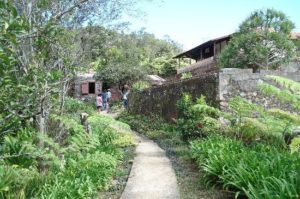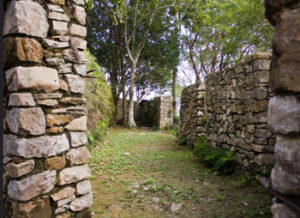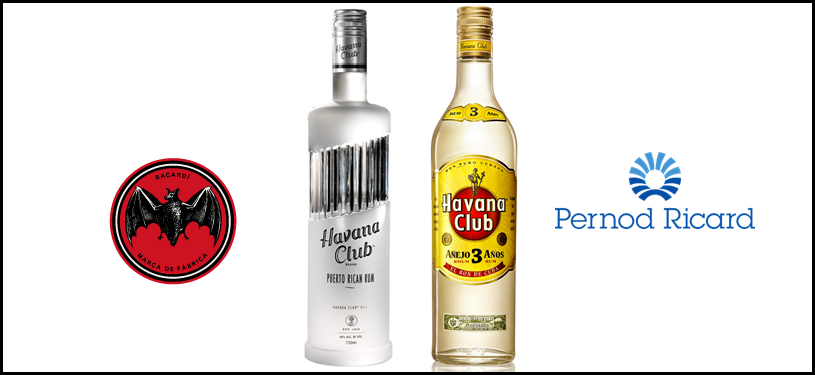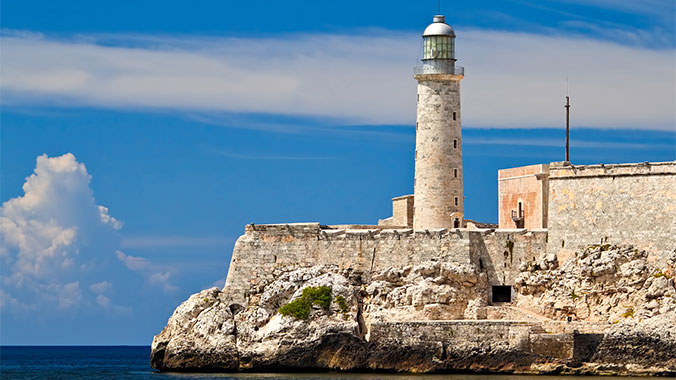French immigration to Cuba began in Cuba already in the eighteenth century, to be strengthened significantly since the nineteenth century. The majority of French people settled in eastern Cuba (Oriente Province).
The Haitian Revolution led to the first great French influx to Cuba in the nineteenth century, especially between 1800 and 1809, with the arrival of more than twenty-seven thousand individuals of all social classes, to the territory east of the island. The city of Santiago de Cuba, which by that time did not have sidewalks or paved streets and did not know the use of the lamps, are now affected by the lack of drinking water, supplies and spaces to contain the big wave of people that were arrived. Newcomers soon realized the favorable geographical conditions presenting this new land. Initially were directed mainly towards the port activities, and even came to stand temporarily on trade in Catalan settled in the jurisdiction.
Coffee production remained in first place in agriculture over the sugar. It was in the forties when Santiago de Cuba reached its highest production of this grain, and when, and at the end of it, began to decline, due to the bankruptcy of some landowners, representing the attraction exploitation of copper deposits, like sugar production. But the great crisis of the coffee production in the region is marked by the beginning of the first war of independence.
The estimated total number of people who went to Cuba is more than 30,000. Despite recommendations by Arango for them to remain in the eastern region, as well as economic factors already mentioned, not a few families settled in other parts of Cuba, even some them were to the Pinar del Río Province.
The number of Cubans of French ancestry remains unknown. In some historical works the number of French colons to Cuba is reported to be over 60,000 in the days of the Haitian Revolution. In those days the total population of Cuba did not reach one million and the balance of white slaves was about 50% whites and 50% blacks. This meant near 10 or 12% of French whites refugees. However, the number of registered residents in the French Consulate record, on 1 May 2012, was 534, two thirds of them residing in Havana. They were primarily officials of the Embassy of the French school, the Alliance Française and their families, and Officials expatriates working for French companies accredited in Cuba and their families.
New Era of Relations.
President Hollande was the first Western leader to visit Cuba in many decades. His entourage, which included 30 business leaders, evidenced France’s wish to promote ties with Cuba and increase the presence of French companies there.
The largest French investment is that of the group Pernod Ricard (Havana Club rum). Other major groups are contributing to Cuban development projects. These are mainly in tourism (Accor), building and construction (Bouygues), telecommunications (Alcatel-Lucent, which installed the underwater fibre optic cable from Venezuela to Cuba), energy (Total, Alstom), electrical engineering, agrifood and transport (Air France).
Around sixty French businesses are active through partnerships with Cuban entities, representative offices and companies owned by French people living locally. Thirteen of them are established in the form of international economic associations (mixed enterprises or partnership agreements) and twenty in the form of branches.
The French business confederation, MEDEF, sends delegations regularly (March 2012, October 2013, October 2015). The annual Havana International Fair is an opportunity for French businesses to showcase their expertise. The next Fair was held in November 2016.
French exports to Cuba may be guaranteed until November 2017 by Coface: an amendment to the Franco-Cuban agreement giving the details of this cover was signed by Mr Matthias Fekl during the visit of the President of the French Republic to Cuba on 11 May 2015.
During his visit to Cuba, the President of the French Republic announced the end of the reconciliation process for Cuban public debt, thus opening the way for negotiations on a multilateral agreement. Negotiations between Cuba and the ad hoc group of its creditors led to a historic agreement on 12 December 2015. The outstanding debt (of about $2.6 billion excluding interest for late payment), which had not been honoured since the late 1980s, will be repaid by Cuba over an 18-year period, due to its economic situation. Under this agreement, France, like the other creditors, will write off the interest for late payment and will see all of the principal and original interest discharged, through direct repayment or conversion into development projects in Cuba as an additional bilateral effort. An agreement on handling Cuba’s debt to France was signed during the State visit of President Raul Castro on 1 February 2016.
This agreement paves the way for a new era in relations between Cuba and its creditors. It will enable the return to Cuba of foreign operators providing medium and long-term financing, as well as export credit agencies and private investors encouraged by this positive sign. The French Development Agency will therefore be able to resume its work in Cuba very quickly, as promised by the President of the French Republic during his historic visit there in May 2015.
Agencies/Wiki/Diplomatic/Internet Photos/Arnoldo Varona/TheCubanHistory.com
THE CUBAN HISTORY, HOLLYWOOD.
FOLLOW US ON TWITTER AND FACEBOOK. THECUBANHISTORY.COM

REPORTE DE LA INMIGRACIÓN FRANCESA A CUBA. RELACIONES ACTUALES.
La inmigración francesa a Cuba comenzó en Cuba ya en el siglo XVIII, para ser fortalecida significativamente desde el siglo XIX. La mayoría de los franceses se establecieron en el este de Cuba (provincia de Oriente).
La revolución haitiana llevó al primer gran influjo francés a Cuba en el siglo XIX, especialmente entre 1800 y 1809, con la llegada de más de veintisiete mil individuos de todas las clases sociales al territorio al este de la isla. La ciudad de Santiago de Cuba, que por entonces no tenía aceras o calles pavimentadas y no conocía el uso de las lámparas, ahora se ven afectadas por la falta de agua potable, suministros y espacios para contener la gran ola de gente que estaba llegado. Los recién llegados pronto se dieron cuenta de las condiciones geográficas favorables que presentaban esta nueva tierra.
La producción de café se mantuvo en primer lugar en la agricultura sobre el azúcar. Fue en los años cuarenta cuando Santiago de Cuba alcanzó su mayor producción de este grano, y cuando, y al final, comenzó a declinar, debido a la bancarrota de algunos terratenientes, representando la atracción de explotación de depósitos de cobre, como la producción de azúcar . Pero la gran crisis de la producción cafetalera en la región está marcada por el inicio de la primera guerra de independencia.
El número total estimado de personas que fueron a Cuba es más de 30,000. A pesar de las recomendaciones de Arango para que permanecieran en la región oriental, así como los factores económicos ya mencionados, no pocas familias se establecieron en otras partes de Cuba, incluso algunas de ellas fueron a la provincia de Pinar del Río.
El número de cubanos de ascendencia francesa sigue siendo desconocido. En algunas obras históricas el número de colonos franceses a Cuba se informa para ser sobre 60.000 en los días de la revolución haitiana. En esos días la población total de Cuba no alcanzó un millón y el saldo de esclavos blancos era de aproximadamente el 50% de blancos y el 50% de negros. Esto significó cerca del 10 o 12% de los blancos franceses refugiados. Sin embargo, el número de residentes registrados en el registro del Consulado de Francia, el 1 de mayo de 2012, era de 534, dos tercios de ellos residiendo en La Habana. Ellos eran principalmente funcionarios de la Embajada de la escuela francesa, la Alianza Francesa y sus familias, y Funcionarios expatriados trabajando para empresas francesas acreditadas en Cuba y sus familias.
Nueva Era de Relaciones.
Desde el restablecimiento de las relaciones diplomáticas entre Estados Unidos y Cuba en 2014, Francia ha estado promoviendo las relaciones de la UE con Cuba para obtener beneficios económicos y comerciales. Francia expresó en repetidas ocasiones su apoyo a su aliado, los EE.UU., llegando a Cuba. Francia está ahora compitiendo con Estados Unidos por sus lazos económicos y comerciales con Cuba. El presidente Hollande fue el primer líder occidental en visitar Cuba en muchas décadas. Su comitiva, que incluyó a 30 líderes empresariales, evidenció el deseo de Francia de promover vínculos con Cuba y aumentar la presencia de empresas francesas allí.
La mayor inversión francesa es la del grupo Pernod Ricard (Havana Club rum). Otros grupos importantes están contribuyendo a los proyectos cubanos de desarrollo. (Alcor-Lucent, que instaló el cable de fibra óptica submarina de Venezuela a Cuba), energía (Total, Alstom), ingeniería eléctrica, agroalimentación y transporte (Air Francia).
Alrededor de sesenta empresas francesas están activas a través de asociaciones con entidades cubanas, oficinas de representación y empresas propiedad de los franceses que viven localmente. Trece de ellos se establecen en forma de asociaciones económicas internacionales (empresas mixtas o acuerdos de asociación) y veinte en forma de sucursales.
La Confederación Francesa de Empresas, MEDEF, envía regularmente a las delegaciones (marzo de 2012, octubre de 2013, octubre de 2015). La Feria Internacional de La Habana es una oportunidad para que las empresas francesas muestren su experiencia. La próxima Feria se celebrará en noviembre de 2016.
Las exportaciones francesas a Cuba pueden ser garantizadas hasta noviembre de 2017 por la Coface: una enmienda al acuerdo franco-cubano que contiene los detalles de esta cobertura fue firmada por el Sr. Matthias Fekl durante la visita del Presidente de la República Francesa a Cuba el 11 de mayo de 2015.
Durante su visita a Cuba, el Presidente de la República Francesa anunció el fin del proceso de reconciliación de la deuda pública cubana, abriendo así el camino para las negociaciones sobre un acuerdo multilateral. Las negociaciones entre Cuba y el grupo ad hoc de sus acreedores dieron lugar a un acuerdo histórico el 12 de diciembre de 2015. La deuda pendiente (de aproximadamente $ 2,6 mil millones excluyendo los intereses de demora), que no había sido respetada desde finales de los años ochenta, será reembolsada por Cuba durante un período de 18 años, debido a su situación económica. En virtud de este acuerdo, Francia, al igual que los demás acreedores, cancelará los intereses de demora y verificará la totalidad del principal y los intereses originales, mediante reembolso directo o conversión en proyectos de desarrollo en Cuba como un esfuerzo bilateral adicional. Un acuerdo sobre el manejo de la deuda de Cuba con Francia fue firmado durante la visita de Estado del presidente Raúl Castro el 1 de febrero de 2016.
Este acuerdo prepara el camino para una nueva era en las relaciones entre Cuba y sus acreedores. Permitirá el retorno a Cuba de operadores extranjeros que aporten financiamiento de mediano y largo plazo, así como agencias de crédito a la exportación e inversionistas privados alentados por este signo positivo. Por lo tanto, la Agencia Francesa de Desarrollo podrá reanudar sus trabajos en Cuba muy rápidamente, como prometió el Presidente de la República Francesa durante su visita histórica en mayo de 2015.
Agencias / Wiki / Diplomático / Fotos de Internet / Arnoldo Varona / TheCubanHistory.com
THE CUBAN HISTORY, HOLLYWOOD.










